If I’m honest, I had mixed thoughts about the type of city Berlin would be. I was aware of its artistic strengths and its pockets of alternative sub-culture, but I couldn’t shake images of ‘the wall’, a clouded past and bleak skies. All these preconceptions did stack up, but there is also a complex undercurrent running through this city, with contradictions at every corner, constantly challenging your thinking of what life is like as a Berliner – both today, and last century.
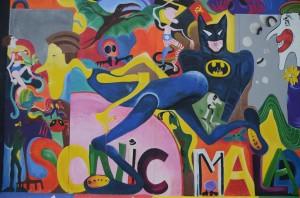
One of our favourite ways to get to know a city is by doing a walking tour. This way you get to see the big sights, gain a brief overview of the history, and help get your bearings.
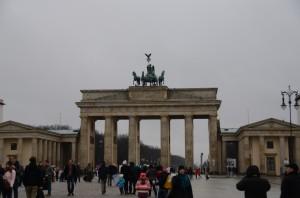
So we flocked to the Pariser Platz, along with hoards of other sight-seers, and met our guide who gave us a flying history lesson of Berlin, Germany, Prussia, before venturing into the Jewish Memorial. I say venturing because the Memorial is quite daunting with its undulating blocks, each at different heights but with the same length by width dimensions.
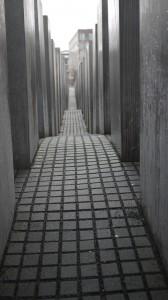
The guide explained that the architect who designed the memorial, Peter Eisenman had never really given a real ‘definition’ of the memorial so that visitors could develop their own interpretation. For me the identical shape of the blocks was symbolic of people being the same, but the heights highlighted how everyone is different – no one block was the same height. For others it was more of an experiential interpretation, feeling a little lost and disorientated. As with any commemorative structure, there was and still is huge controversy over the memorial, because how can you singly represent such a tragic, moving and sad event in time? Well you can’t, but you can do things with space and form that invoke thinking and emotion. In my view, Eisenman succeeded on this front.
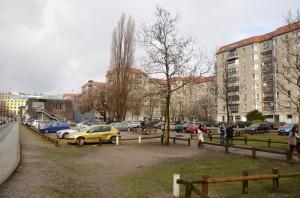
From one sombre site to the next. The seemingly benign carpark that our guide had led us to turned out to be the ground above Hitler’s former bunker. Surrounded by bland, out-dated apartment blocks, it was hard to imagine that beneath this small plot of land once lay Hitler’s lair, where he spent his last days, before his demise and then death.
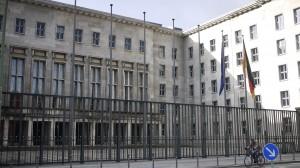
We then went to the huge, ominous brick building which during the Second World War acted as the Air Ministry Building, but is now the Federal Ministry of Finance. Around the corner was our first proper glimpse of one of the few remaining sections of the wall, giving us a quick sense of the enormity of the project and the stamping out of freedoms.

On a lighter and more humorous note, we saw the ‘Trabi Safari’ cars – the small, clunky cars from cold war days, when these and only one other vehicle type were available to East Germans. And then the commercially trashy and touristy ‘Check Point Charlie’, complete with sand bags and flag-waving American ‘soldiers’ who for a few euros would stamp your passport for you. Pass.
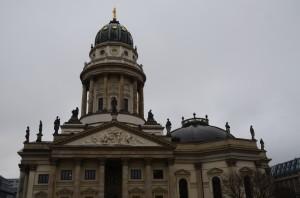
Gendarmenmarkt square was a fine example of some of the beautiful architecture Berlin has to offer – it was also a reminder of the deep-seeded tension between France and Germany, each with their ‘German Cathedral’ and ‘French Cathedral’ – the German one of course had to be built a little bit higher. Both however are amazing buildings in their own right and stare across the square at each other.

The next square, Bebelplatz, wasn’t any less intense, as this is where Nazis burned books from their top 20,000 blacklist of authors. There is a small glass portal, which gives you a glimpse into a sealed room with white, empty bookshelves, a poignant symbol of an awful act.
We then visited the ‘New Guard House’, Neue Wache, which is now home to a sculpture of a mother holding her dead son,sitting cold and alone in this square cold space. Another moving memorial, this one commemorating the victims of war.
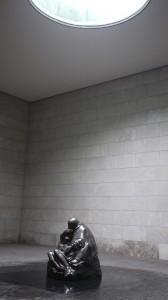
Our final stop for the walk was at the Museum Island, straddled by the Spree River, overwhelming visitors with an extensive choice of art and relics in a range of museums. We decided to explore the Pergamon Museum, named after the Pergamon Altar, where you can walk up the steps and imagine the view that would have once lain before its Greek worshippers. You can also stroll through the Market Gate of Miletus and browse the treasures from Babylon.
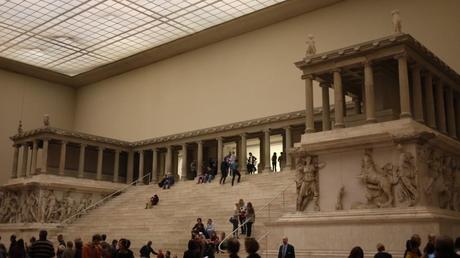
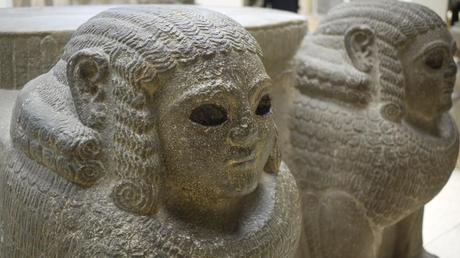
All that sight-seeing and museum-going made for thirsty work, so after a quick rest we headed back out and joined an alternative pub crawl. We met up with other thirsty travellers in the Yesterday Bar, which was decked out with 60s, 70s, 80s paraphernalia (and just a random mix of stuff from over the generations). After a reasonably priced Mojito and Bellini and arching our necks backwards to look at the toadstools on the ceilings, we were off to the next bar. This time it was the Goth-Rock delights of The Last Cathedral,

apparently once famed as the hangout for Marilyn Manson and Rammstein. With skulls adorning the bar, and coffins as tables, we were entertained by a bar-top-dancing-PVC–clad blonde (all organised, not just a random after a few wines), pulling out a mix of ballet splits and something more akin with a red light district. Then it was time for a swig of Jagermeister and we were off again.
The attraction of the next bar was the mulit-interactive ping pong table. For 5 Euros you could borrow a paddle and join the large circle of people who each take a turn ensuring they return the ball safely to the other side.
If you foul, then you’re out, and have to take your seat, and sip your beer, chastising yourself for the overzealous swing you just pulled. The less people there are the more fast and aggressive it gets, as you have to quickly run to the other end of the table to make your shot. This ‘last-two-men(or women)c-standing’ game then sees the finalists play off against each other. And then, when it’s over, everyone gets to join in again.
As our ping pong skills were clearly not improving, we all moseyed on to the next bar – this time, to an Indie Rock bar, slightly more club styles with loud music but a good vibe. This sadly was our last stop on the pub crawl as the underground system was soon to come to a grinding halt and we had to get across the other side of Berlin.
With ringing in our ears and smoke in our hair, we retired for the evening.
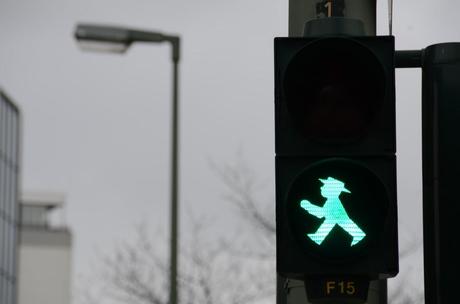
On the Sunday we set off for East Side Gallery, which is the mural-clad section of the wall near the river. Artists were invited to paint the wall, with many opting for political messages, others for bold colour and design.
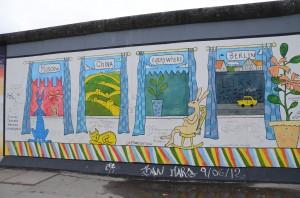
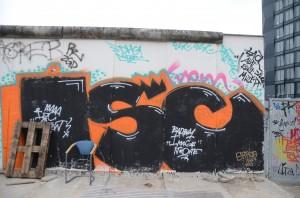
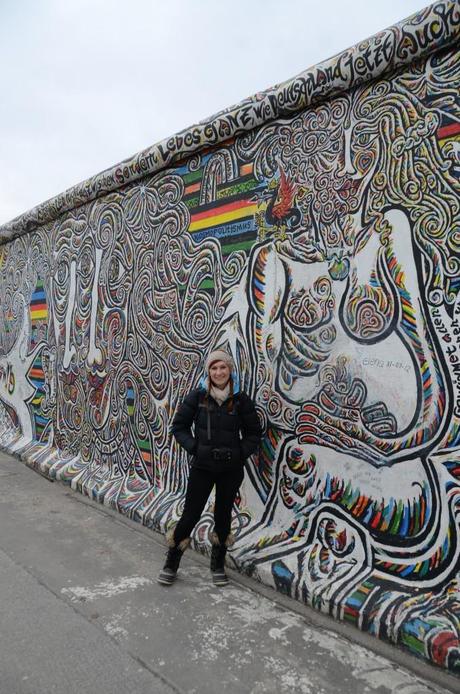
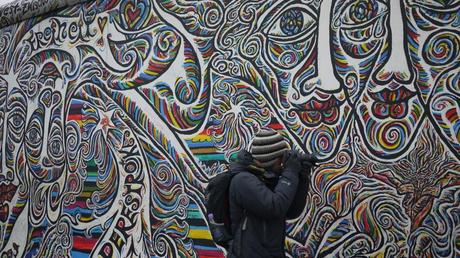
Then for a completely different kind of design. A visit to the Bauhaus Archiv. This place is well-worth a visit, especially if you have an interest in architecture and design. This great little space allows you to see the evolution of the steel piping chair, as well as the amazing models of the Bauhaus school, and Mies van der Rohe’s Pavilion (based in Barcelona). It was incredible to see original prototypes of lamps that went on to be mass-produced, and basic design and function that we take for granted today. I liked thinking about how cutting-edge and Avant-garde these young visionaries must have been, led through volatile times by masters such as Walter Gropius and Mies van der Rohe. Then to indulge our enhanced understanding of design, form and function, we snooped around the fantastic gift shop, followed by a much needed espresso.
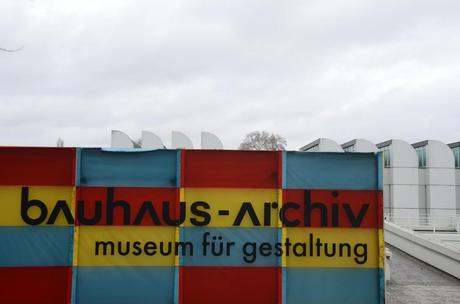
Parts of the wall are fragmented throughout the city, but there is one section which gives you a cold, hard understanding of the divide and danger it presented. The Berlin Wall Memorial details the life before the wall, the building of it, and the failed attempts and successes of scaling it.
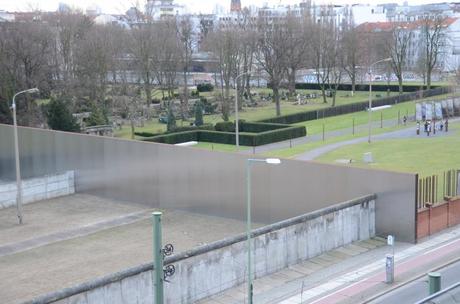
There are commemorative photos of the brave souls who were not successful, and a whole section preserved to show the sandpit (littered with traps) between the inner and outer wall. The watch tower looms over this section, showing the absolute advantage point of the guards, and you get a sense of the utter desperation the escapees must have experienced as they made their dash towards the outer wall. What continues to shock is when you look at the dates and the realisation that not that long ago, this city and its people were physically divided, and the utter despair they must have felt, separated from their family and former lives. The viewing platform at the Documentation Centre allows you to see right along this strip of the wall, and unlike former East Berliners, you can see across both sides.

It can’t be easy for a city whose dark history is one of the main attractions for curious tourists. On the one hand you get the sense that it is trying to bridge away from these events but at the same time acknowledge, accept and help others understand. Despite these sombre undertones, there is a real vibrancy to Berlin. From the inviting shops to the non-conventional nightlife, to the mish-mash of old and new architecture, you feel like this is a city reshaping and redefining itself.
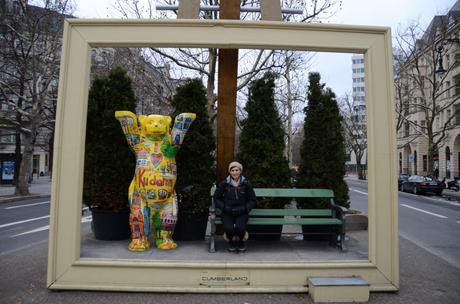
This is our last European escapade for a while – hope you enjoyed reading this travel blog. We would love to hear your thoughts on Berlin – please feel free to use the comments box below.



COMMENTS ( 1 )
posted on 16 July at 00:20
Fastidious replies in return of this difficulty with solid arguments and telling all regarding that.
posted on 24 November at 09:00
I was in Berlin in October 2014, for 10 days and and totally loved it there. I loved your travel blog very much and it brought back so many memories. I have posted on Facebook many photos of my travels including Prague and Krakow. Cheers Shaun.